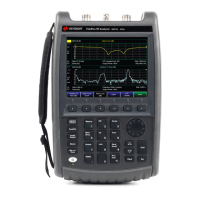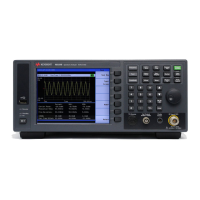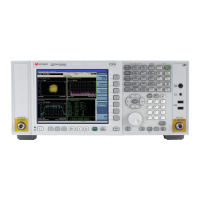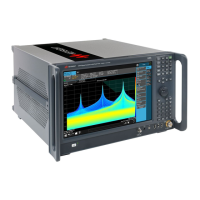Keysight N9912-90001 User’s Guide 7- 7
Calibration for NA, CAT, and VVM Modes
Why and When to Calibrate
How to perform a Normalization
—Press Cal 5
.
— Cal Type [Normalize]
should appear.
— Connect a short, high-quality, phase stable cable between the FieldFox RF
OUT and RF IN connectors.
—Press Start CAl then Thru then Measure.
—Press Finish
.
— Connect the DUT between the RF OUT and RF IN connectors.
CAL ON U is shown on the screen when a Normalization Cal is correcting the
measurement.
Interpolation
Highest measurement accuracy is achieved when the frequency range or
resolution settings remain the same during the measurement as when the
FieldFox was calibrated. If these settings change after performing a calibration,
the FieldFox will interpolate the calibration so that VERY accurate
measurements continue to be made.
Interpolated Calibrations are only slightly less accurate than a calibration
performed at the measurement settings.
For example, if frequency settings change after a Preset Calibration is
performed, the Preset Calibration is only slightly less accurate.
Learn more about the relative accuracy of FieldFox calibrations in below.
When a calibration that you performed is being interpolated, an asterisk is
added to the screen annotation as follow: Cal ON*.
For highest accuracy: a new cal should be performed when the temperature
changes more than about 10F (5C), or when the connection to the DUT
requires a different jumper cable or adapters.
All subsequent insertion loss measurements are made relative to the
insertion loss of this cable. For example, if you use a Normalization cable
with 1 dB of loss, then after pressing Normalize, the display will show 0 dB
of loss with this cable in place. Therefore, for highest accuracy, when
measuring the DUT also attach the cable that was used in the
normalization cal.
A Normalization cal will NOT be interpolated if the Resolution or
Frequency range changes.

